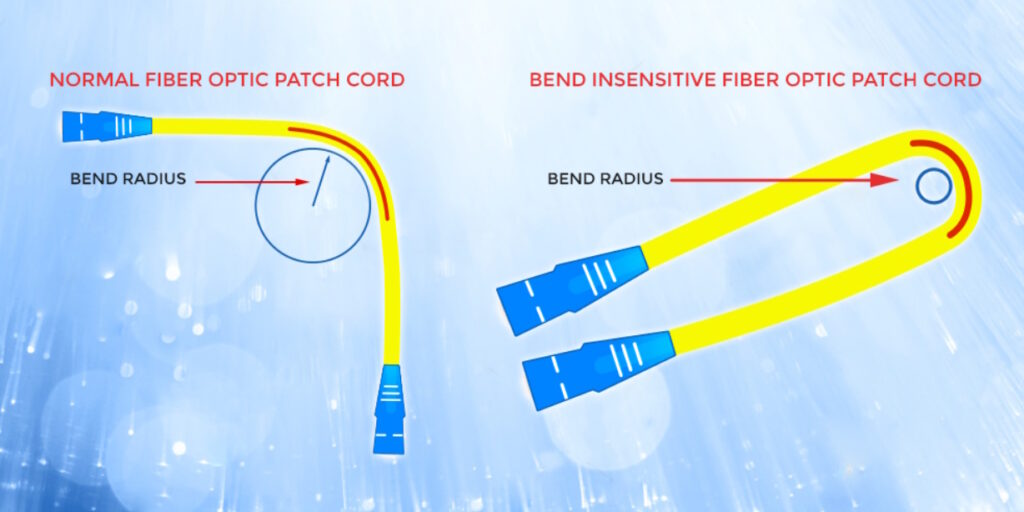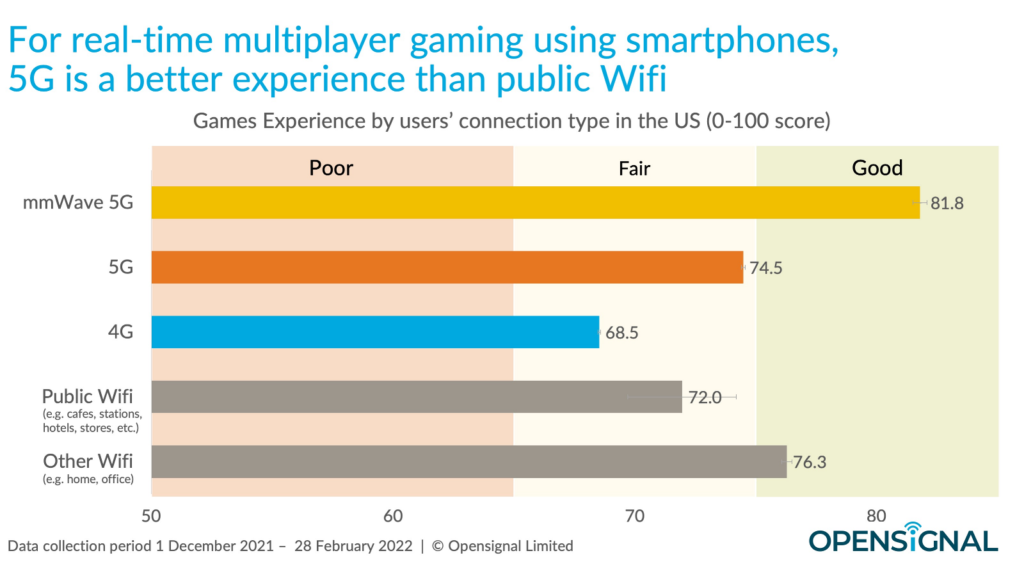For a 5G fronthaul between the base station and the core network, fiber is essential to ensure low latency. Various fiber options are available to enhance installation density and flexibility in this critical connection.
Popular choices include bend-insensitive fiber (BIF), OM5 fiber, ultra-low-loss (ULL) fiber, and reduced-diameter fiber. Each option offers specific performance benefits tailored to deployment requirements such as high density, long reach, and flexibility.
ITU-T G.657 and BIF
The ITU standard ITU-T G.657 defines the performance criteria for single-mode optical fibers that are resistant to bending, known as BIF. BIF is particularly advantageous in challenging indoor environments like 5G micro base stations where space is limited and cabling is dense.
BIF’s bend performance is evaluated by measuring the optical loss when the fiber is bent to a specified radius compared to a standard fiber at the same bend radius.

Figure 1. BIF cables are designed to minimize optical losses even in small radius bends. (Image: Nexus Net)
G.657.A2 and G.657.B2 have a minimum bend radius of 7.5 mm, while G.657.B3 has a 5 mm minimum bend radius. G.657.A fiber adheres to the previous ITU-T G.652.D standard but offers around ten times better macro bending performance. G.657.B surpasses any previous standard and provides significantly better bend performance than G.657.A.
TIA-492AAAE and OM5
The primary standard for OM5 fiber is TIA 492AAAE, defining it as Wideband Multimode Fiber (WBMMF) in ISO/IEC 11801. OM5 supports an extended wavelength range from 850 to 953 nm, facilitating shortwave wavelength division multiplexing (SWDM).
OM5 also enables bidirectional (BiDi) technology for simultaneous two-way communication using different wavelengths in each direction. SWDM is ideal for ultra-high-speed data transmission over short distances, while BiDi is commonly used in scenarios where minimizing fiber usage is critical.
OM5 plays a crucial role in 5G networks, especially in cloud data centers and high-bandwidth core networks, supporting multiple wavelengths for efficient data transmission. With technologies like PAM4 and WDM, OM5 fibers can handle data speeds of up to 400 Gb/s over 150-meter cables, making them perfect for 5G intra-data center connections.
ITU-T G.654E and ULL
The “E” in ITU-T G.654E signifies enhanced performance. Originally designed for submarine cables, these cables are now used in terrestrial long-haul and high-speed applications within 5G networks. ULL cables offer superior optical signal-to-noise ratio and lower attenuation compared to other G.654 cables.
By transmitting data over longer distances with fewer amplifiers, ULL cables can reduce overall network installation and operational costs. Enhanced performance is achieved through a larger effective area of optical fiber, the use of high-purity materials, and optimized cladding designs.
Reduced Diameters
Reducing cable diameters is a common strategy to enhance interconnect density in 5G setups, especially when facing constraints in cable pipeline size.
A typical fiber optic cable consists of a core within a 125 µm diameter glass cladding, surrounded by a 250 µm thick protective coating. Thinning the coatings can reduce the cable’s diameter without affecting the fiber or cladding size, allowing three cables to fit into a pipeline previously accommodating two cables.
No standardized reduced-diameter cables exist, unlike OM5 and ULL fiber types. While the industry standard cable diameter is 250 µm, reduced-diameter cables ranging from 200 to 180 µm thickness are available. Numerous fiber optic cable manufacturers offer OM5, ULL, and other fiber types in reduced-diameter variants.
Summary
Fiber optic cables play a vital role in meeting the high bandwidth and low latency demands of 5G fronthaul setups. International standards define BIF, OM5, and ULL cables, while the industry continues to innovate with materials and techniques to produce reduced-diameter cables for higher installation densities.
References
5 Types of Fiber Optic Cables for 5G Networks, FS
An Economic Comparison of Fronthaul Architectures for 5G Networks, Cisco
Fiber in 5G Networks, ElectroRent
Fronthaul, Viavi
How Time-Sensitive Networking Benefits Fronthaul Transport, IEEE Standards Association
ITU-T G.654.E Fiber, Sumitomo Electric
Reliable and cost-efficient protection scheme for 5G fronthaul/backhaul network, Heliyon
What is 25G WDM Technology of 5G Fronthaul, Fiber Mall
EEWorld Online Related Content
Five reasons why TSN over 5G promises timely deliveries
5G fronthaul networks add flexibility
High-speed data challenges physical-layer optics
How are optical interconnects being miniaturized?
What embedded protocols can you use for optical connectivity?




